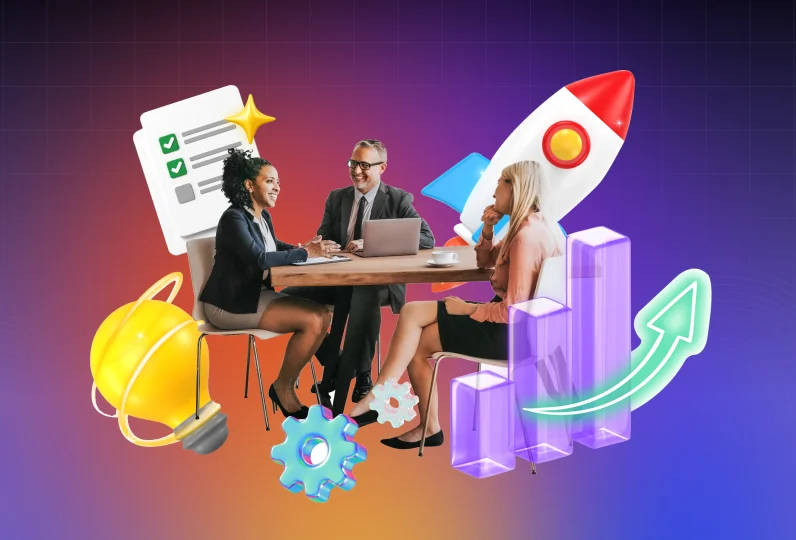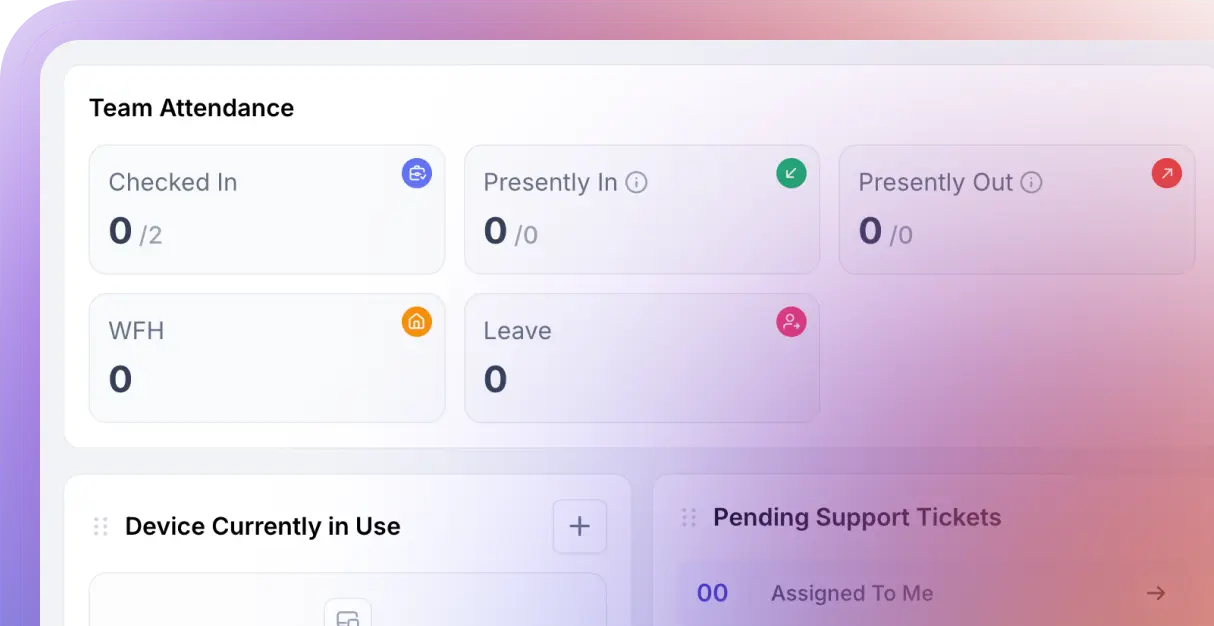As your business grows, so does the challenge of managing an expanding workforce. What started as a tight-knit team of a few employees can quickly become a complex, high-maintenance network of people, roles, and processes. Without a scalable system, growth can lead to inefficiencies, miscommunications, and frustration on both sides.
The key to successful expansion lies in creating a system that evolves with your workforce. A scalable HR system can grow seamlessly, adapting to new team members, shifting organizational structures, and increasing operational demands. By building a strong foundation early on, you can avoid the pitfalls of manual processes, outdated tools, and ad-hoc policies.
The blog will walk you through the essential steps to design a scalable HR system, one that helps streamline your processes, enhances employee experience and sets your business up for long-term success. Whether you’re a startup in its early stages or a rapidly growing company, the blog will give you insights on building a workforce management system that thrives alongside your business.
Key Takeaways
- Scalability Defined: Understand what a scalable HR system entails.
- Core Components: Essential features that ensure flexibility and efficiency.
- Efficiency Tips: Best practices to streamline workflows and automate processes.
- Scalability Challenges: Common hurdles like integration, data management, and workforce growth.
- Off-the-Shelf Solutions: How ready-made HR systems boost productivity and implementation speed.
- Strategic Impact: Manage growth effectively, optimize resources, and ensure seamless HR operations.
What Does It Mean to Have a Scalable HR System?
A scalable HR system can efficiently grow and adapt as your company expands. As your workforce increases in size, so do the complexities involved in managing employees, from recruiting and onboarding to performance management and compliance.
A scalable HR system ensures that these processes can handle increased volume and complexity without breaking down, allowing your business to grow smoothly without sacrificing efficiency, accuracy, or employee satisfaction.
Core Components of a Scalable HR System
A scalable HR system includes several core components like standardized processes, team structure, technology, automation and integration, flexibility and customization, data management and analytics, etc. These components ensure efficiency and adaptability and help manage growth effectively while streamlining HR operations. The following section breaks down these components in detail for a clearer understanding.
1. Standardized Processes
A scalable system relies on standardized processes for key HR functions like hiring, performance reviews, and employee development. These processes can be easily replicated and adjusted as the organization grows.
2. Team Structure
A well-defined team structure ensures that every employee understands their role and proceeds with the work without feeling confused or unclear. Employees in a structured team environment receive clear guidance and support and perform their tasks efficiently.
3. Technology
Technology streamlines HR tasks such as payroll, recruitment, performance evaluations, and attendance tracking, reducing manual work and human error. Moreover, applicant tracking systems (ATS) help HR teams filter and shortlist candidates quickly and enable seamless communication through employee portals, chat platforms, and video conferencing tools, keeping teams connected.
4. Automation and Integration
Scalable HR systems leverage automation tools and integrate various HR functions like payroll, time tracking, and benefits management into a single platform, reducing the need for manual intervention and helping HR teams handle larger volumes of work seamlessly.
5. Flexibility and Customization
While systems must be standardized, they should also follow flexibility to accommodate the unique needs of different departments, roles or regions. A scalable system should allow for customization without becoming overly complicated.
6. Data Management and Analytics
As your workforce grows, the volume of employee data increases significantly. A scalable HR system ensures that the data is organized, accessible, and actionable. HR analytics can help your team make informed decisions about hiring, promotions, and overall workforce strategy.
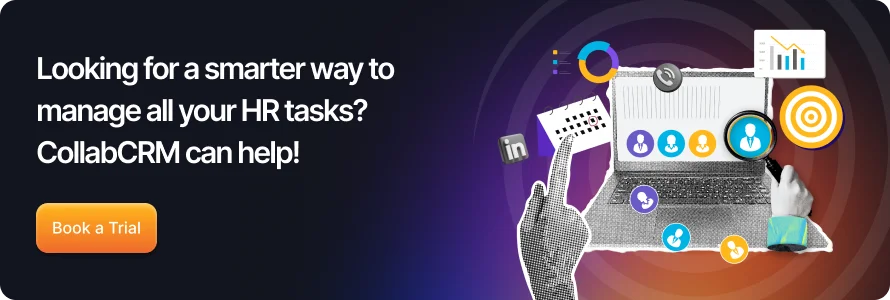
Building an HR System That Drives Efficiency: Tips and Best Practices
Building an HR system involves several key best practices, including identifying your business needs, opting for a scalable and flexible system, focusing on building a user-friendly interface, ensuring seamless integration with existing tools, etc.
Along with it, maintaining data security and compliance, incorporating AI and data-driven features, and checking vendor reputation and customer support are also impactful practices. These practices help streamline HR operations, improve productivity, and ensure the system adapts effectively as your organization grows. Take a look at how these best practices can be applied.
1. Identify Your Business Needs
Determine what HR processes you want to automate and consider your organization’s size and growth potential to ensure the system can scale as your workforce expands. With an HR system, you can automate payroll requirements, performance management, employee engagement, etc. You must acknowledge these requirements and factor compliance accordingly.
2. Opt for a Scalable and Flexible System
A scalable HR system can grow with your business, accommodating additional employees and new functionalities. Cloud-based HR solutions offer flexibility, remote accessibility, and automatic updates, making them ideal for organizations with hybrid or remote teams. Ensure the software allows for easy customization, so you can tailor workflows and reports based on your company’s evolving needs.
3. Focus on Building User-Friendly Interface
Choose an HR system that is easy to navigate for both HR professionals and employees. A simple, intuitive interface reduces training time and enhances user adoption. Additionally, mobile accessibility must be a part of it, as it allows employees to access HR services, check payroll information, and request leave from their smartphones. Before making a final decision, request a demo or trial to evaluate the software’s usability.
4. Ensure Seamless Integration with Existing Tools
Your HR system should integrate smoothly with other business software, such as payroll, finance, project management, and communication platforms. Compatibility with tools maximizes workflow efficiency by eliminating manual data entry and reducing errors. Check whether the software offers open API capabilities for custom integrations.
5. Ensure Data Security and Adhere to Compliance Rules
HR systems store sensitive employee information, making security a top priority. Choose software that follows industry standards such as GDPR, SOC 2, or ISO certifications. Features like data encryption, multi-factor authentication, and role-based access controls help protect confidential HR data.
6. Look for AI and Data-Driven Features
Modern HR systems leverage AI and analytics for better decision-making. AI-driven tools can assist with predictive workforce planning, employee engagement analysis, and performance tracking. Integrate chatbots to enhance employee self-service, answering HR-related queries instantly. Analytics dashboards provide real-time insights into hiring trends, turnover rates, and overall workforce performance.
7. Check Vendor Reputation and Customer Support
A reliable HR software provider should have positive reviews, testimonials, and case studies demonstrating their success in similar industries. Research the vendor’s track record, customer service responsiveness, and software updates. Look for providers that offer 24/7 support, detailed training materials, and a dedicated account manager for seamless implementation and troubleshooting.
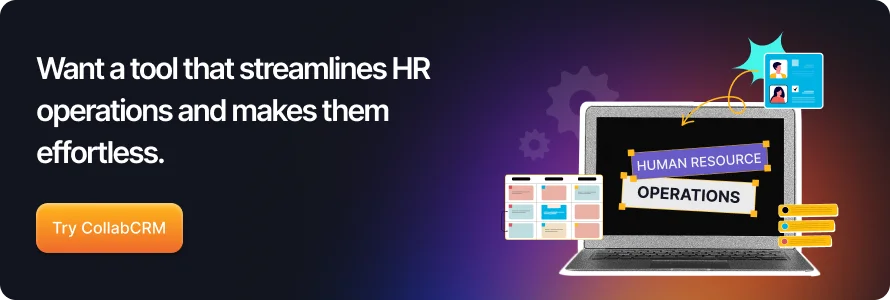
Scalability Challenges in HR Tech: What to Watch For?
Scalability challenges in HR tech include data management and scalability, integrations with other systems, performance and load handling, automation and AI integration, security and privacy, and user experience and adoption. These challenges can impact system efficiency, employee engagement, and overall HR operations as your workforce grows. Here’s a closer look at these challenges to understand their impact and how to address them.
1. Data Management and Scalability
As an HR system grows, handling large volumes of employee data, including payroll, performance records, recruitment details, and benefits becomes a major challenge. Poorly designed databases can lead to slow response times and data bottlenecks, making scalability difficult.
2. Integrations with Other Systems
Seamless integration ensures data consistency across platforms, but achieving this can be complex due to differences in data formats, APIs, and security protocols. Moreover, poorly implemented integrations can result in data duplication, synchronization issues, and operational inefficiencies.
3. Performance and Load Handling
HR systems experience peak loads during critical periods, such as payroll processing, performance review cycles, and large-scale recruitment drives. Sometimes the system fails to handle increased user traffic, leading to slowdowns or crashes.
4. Automation and AI Integration
AI-powered chatbots can assist employees with common queries, while machine learning algorithms can help with talent acquisition by analyzing resumes and predicting candidate suitability. However, implementing AI requires significant investment in data quality, processing power, and ongoing model training.
5. Security & Privacy
Threats like data breaches, unauthorized access, and insider threats can make the system vulnerable to cyberattacks. They must be mitigated with robust security measures, including encryption, multi-factor authentication (MFA), and role-based access control (RBAC).
6. User Experience & Adoption
A complex and unintuitive HR system can lead to low adoption rates among employees and HR professionals. The onboarding process may be hindered if the interface doesn’t have self-service capabilities that allow employees to update personal details, apply for leave, and access payroll information independently.
How an Off-the-Shelf HR System Enhances Efficiency and Productivity
Unlike custom-built solutions that demand extensive development time and high costs, an off-the-shelf HR system provides instant deployment, automating significant processes that impact scalability and productivity. The system helps you eliminate manual inefficiencies and repetitive tasks, reducing administrative workload and human errors.
Moreover, advanced self-service portals empower employees to manage information, apply for leave, and access payroll details without constant HR intervention, fostering transparency and engagement. These systems have built-in compliance tools that ensure adherence to labour laws, tax regulations, and data security protocols, reducing legal risks.
Seamless integration with existing business tools, such as accounting software and CRM platforms, that enhances data synchronization and operational fluidity. As businesses scale, an off-the-shelf HR system grows alongside them, offering adaptability without costly overhauls. With real-time analytics, companies gain valuable workforce insights, enabling data-driven decision-making that improves employee satisfaction and retention.
Bottom Line
Building a scalable HR system is a strategic investment in your company’s future. As your workforce grows, your HR infrastructure should not only keep pace but also help you stay ahead. A well-designed, scalable HR system empowers HR teams to focus on high-impact activities, drives operational efficiency, and provides valuable insights to shape key business decisions.
How CollabCRM Simplifies HR Operations for Your Team
CollabCRM centralizes all employee data into one platform, making HR operations faster and more organized. The Business Operating System lets HR teams handle onboarding, attendance, leave management, work-from-home records, and skill tracking in one place.
HR professionals can access real-time information, monitor performance, and make decisions efficiently without juggling multiple systems. The platform automates routine HR tasks such as leave approvals, attendance monitoring, and holiday reminders, reducing manual work and errors.
HR teams can coordinate seamlessly with other departments, track employee availability, and analyze trends in performance and engagement. Mobile access allows employees and managers to complete HR tasks on the go, keeping operations smooth and efficient at all times. Its comprehensive features and user-friendly interface make it an invaluable tool for HR teams looking to improve efficiency and effectiveness.
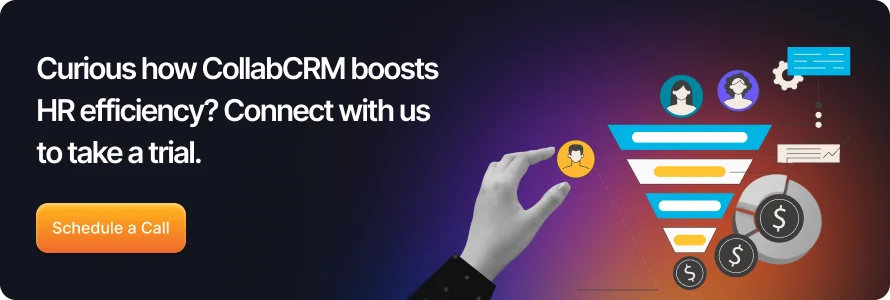
FAQs
An HR system is used to manage and automate human resources functions such as employee data, payroll, recruitment, performance management, and compliance. It helps streamline HR operations, improve efficiency, and provide actionable insights for better workforce management.
The four core components of an HR system typically include Core HR (employee data and records), Talent Management (recruitment and performance), Payroll & Benefits, and Analytics & Reporting. Together, these modules ensure comprehensive management of HR processes and data.
The best HR system depends on your organization’s needs, but CollabCRM stands out for its ease of use, scalability, robust features, and seamless integrations. It helps businesses manage HR operations efficiently while improving employee engagement and productivity.
An HRIS (Human Resource Information System) primarily focuses on storing and managing employee data, while an HRMS (Human Resource Management System) goes beyond data management to include payroll, performance tracking, recruitment, and other HR functionalities.


